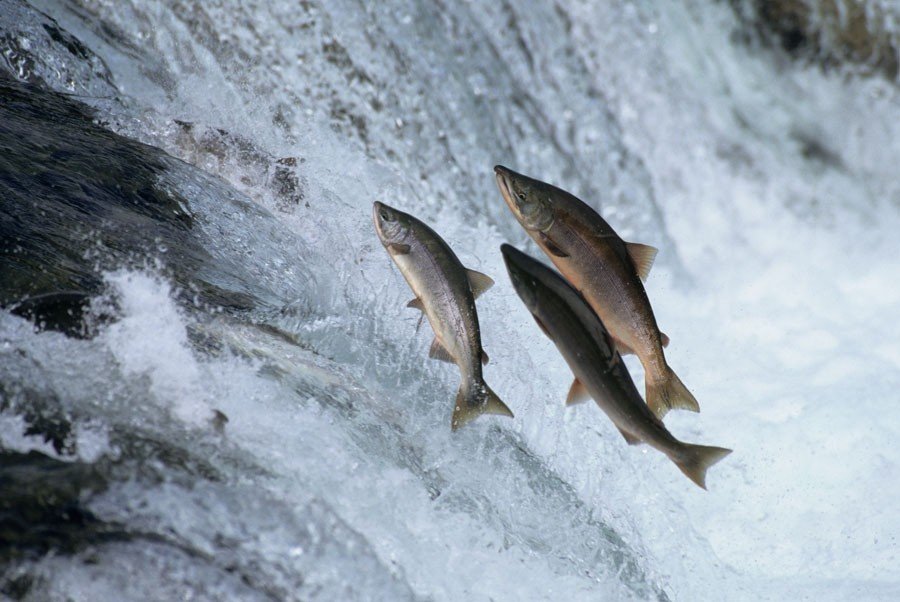Salmon fly fishing is an exciting and rewarding pursuit for anglers of all skill levels. However, timing is crucial to ensure a successful fishing trip. Different seasons and specific times of the year offer varying opportunities for salmon fishing, depending on the species and location. Here are the best times of year for salmon fly fishing, broken down by season and region.

Best Times of Year for Salmon Fly Fishing
1. Spring: The Start of the Season
-
North America:
- Pacific Northwest: Spring marks the beginning of the salmon fishing season, particularly for Chinook (King) salmon. Rivers such as the Columbia and Willamette start seeing runs of Chinook salmon in March and April.
- Great Lakes: In the Great Lakes region, Coho salmon begin their spring migration, making it an excellent time to fish for them in tributaries and nearshore areas.
-
Europe:
- Scotland and Norway: Spring is prime time for Atlantic salmon in rivers like the Dee, Tay, and Spey in Scotland, as well as the Gaula and Orkla in Norway.
2. Summer: Peak Salmon Fishing Season
-
North America:
- Alaska: Summer is the peak season for all five species of Pacific salmon in Alaska. King salmon runs are strong in June, followed by Sockeye (Red), Chum (Dog), and Pink (Humpy) salmon throughout July and August. Silver (Coho) salmon also start appearing in late summer.
- Pacific Northwest: The summer months, particularly June through August, are excellent for Chinook and Coho salmon fishing in rivers like the Kenai, Skagit, and Fraser.
-
Europe:
- Iceland: Summer is the best time for Atlantic salmon in Iceland. Rivers like the Laxá and Blanda see strong runs from June to August.
- Ireland and UK: In Ireland and the UK, rivers like the Blackwater and Tweed experience significant Atlantic salmon runs during the summer months.
3. Fall: Late-Season Opportunities
-
North America:
- Pacific Northwest: Fall is a prime time for Coho and Chinook salmon fishing. Rivers like the Sacramento and Rogue see strong runs from September to November.
- Great Lakes: Fall is the peak season for Chinook and Coho salmon in the Great Lakes. Tributaries of lakes Michigan, Huron, and Ontario are particularly productive.
-
Europe:
- Norway and Scotland: Fall continues to offer good opportunities for Atlantic salmon fishing in Norway and Scotland, with many rivers seeing their final runs before the season ends.
4. Winter: Off-season but Still Productive
-
North America:
- California: In California, winter steelhead fishing often overlaps with late-season salmon fishing. Rivers like the Klamath and Eel offer opportunities for those willing to brave the colder weather.
- Pacific Northwest: While winter is not the peak season, some rivers still offer chances to catch late-running Coho salmon and winter steelhead.
-
Europe:
- Norway: Some Norwegian rivers remain open during the early winter months, providing opportunities for catching late-running Atlantic salmon.
Tips for Successful Salmon Fly Fishing
- Research Local Regulations: Always check local fishing regulations and season dates, as they can vary by region and river.
- Use the Right Gear: Ensure you have the appropriate gear for the species and conditions. This includes selecting the right fly rods, reels, and flies.
- Hire a Guide: If you’re new to an area or species, consider hiring a local guide. They can provide valuable insights and increase your chances of success.
- Pay Attention to Weather and Water Conditions: Salmon are sensitive to changes in water temperature and flow. Monitoring these conditions can help you time your fishing trips more effectively.
Conclusion
The best times of year for salmon fly fishing vary depending on the location and species. Spring and summer are generally the most productive seasons, but fall and even winter can offer excellent opportunities in certain regions. By understanding the seasonal patterns and planning your trips accordingly, you can maximize your chances of a successful and enjoyable salmon fishing experience.


